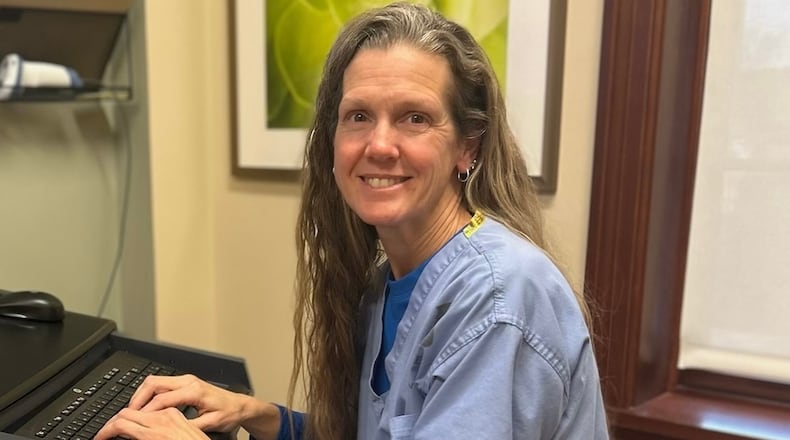HPV is a sexually-transmitted infection that spreads by skin-to-skin contact, according to the Cleveland Clinic. While cervical cancer was the first focus for the HPV vaccine and HPV-related cancer research, researchers are finding it linked to multiple other types.
“Now we’ve found and discovered more about HPV that it also causes these other types of cancer,” Alten said.
In addition to cervical cancer, it has been linked to cancers of the vulva, vagina, penis, anus, and certain head and neck cancers, according to the Centers for Disease Control.
Deaths decrease while diagnoses pick up
While overall cancer mortality has continued to decrease, there has been an increasing incidence for many cancer types, especially among women and younger adults, shifting the burden of disease, according to the American Cancer Society.
Cancer rates in women between the ages of 50 to 64 years old have surpassed cancer rates in men, and cancer rates in women under 50 are now 82% higher than their male counterparts, up from 51% in 2002, the American Cancer Society reported.
“Continued reductions in cancer mortality because of drops in smoking, better treatment, and earlier detection is certainly great news,” said Rebecca Siegel of the American Cancer Society said.
“However, this progress is tempered by rising incidence in young and middle-aged women, who are often the family caregivers, and a shifting cancer burden from men to women, harkening back to the early 1900s when cancer was more common in women,” Siegel said.
These cancers increasing among women and younger patients include HPV-related cancers, among other cancer types like breast cancer and cancers of the oral cavity, pancreas, uterine corpus, and liver.
Black women are also 50% more likely to die from cervical cancer compared to white women, the American Cancer Society says.
“Progress against cancer continues to be hampered by striking, wide static disparities for many racial and ethnic groups,” said Dr. Ahmedin Jemal, senior vice president, surveillance and health equity science at the American Cancer Society and senior author of the study.
Addressing disparities among cancer rates between people of different races can bring people a step further to ending cancer for everyone, he said.
“It’s essential to help end discrimination and inequality in cancer care for all populations,” Jemal said.
HPV vaccine can reduce risks
Alten is urging people to utilize the HPV vaccine, which is Gardasil-9, to help protect themselves from those multiple types of cancer. The HPV vaccine is part of the American Academy of Pediatrics' recommended vaccine schedule for children between 11 and 12, she said. Children as young as nine years old can also safely receive the vaccine.
“You want to give the vaccine before the individual has been exposed to HPV, so basically before they’re sexually active,” Alten said.
Adults through 26 years of age are also recommended to receive the HPV vaccine. Certain adults up to the age of 45 years old may also be recommended to receive an HPV vaccine.
If the patient has already had HPV, the vaccine can provide some protection against other strains of HPV, but it cannot protect the patient from the type of HPV they already have, Alten said.
“The majority of Americans are going to be positive for HPV at some point in their life,” Alten said.
Gardasil was the first FDA-approved HPV vaccine, which became available in 2006, but since 2017, Gardasil-9 has been the only HPV vaccine available in the U.S., according to the Cleveland Clinic.
The HPV vaccine is available through doctor offices and some pharmacies. Under the Affordable Care Act, most insurance plans are required to cover the cost of recommended vaccines like Gardasil-9. Children may also qualify for free or low-cost health insurance through Medicaid or the Children’s Health Insurance Program (CHIP).
You can find a health center near you by visiting findahealthcenter.hrsa.gov.
By the numbers
Gardasil-9 protects against strains of HPV infections associated with 90% of cervical cancers, 90% of anal cancers and many cancers that can affect your throat and genitals.
Gardasil-9 also protects against HPV strains that cause 90% of genital warts.
HPV infections and cervical pre-cancers (abnormal cells on the cervix that can lead to cancer) have dropped since 2006, according to the CDC. Those figures include:
- Among teen girls, infections with HPV types that cause most HPV cancers and genital warts have dropped 88%.
- Among young adult women, infections with HPV types that cause most HPV cancers and genital warts have dropped 81%.
- Among vaccinated women, the percentage of cervical pre-cancers caused by the HPV types most often linked to cervical cancer has dropped by 40%.
About the Author

